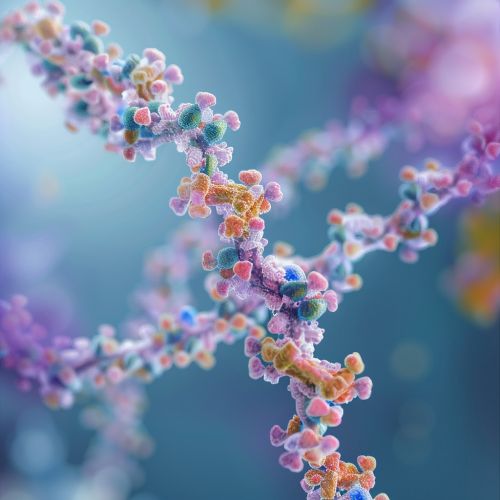Calsequestrin 2
Introduction
Calsequestrin 2 (CASQ2) is a protein that in humans is encoded by the CASQ2 gene. It is a member of the calsequestrin family of proteins, which are high-capacity, moderate affinity, calcium-binding proteins present in the sarcoplasmic reticulum of muscle cells. CASQ2 is the main calcium-binding protein found in the sarcoplasmic reticulum (SR) of cardiac muscle cells.


Structure and Function
CASQ2 is a low-affinity, high-capacity calcium-binding protein that can bind approximately 40-50 calcium ions per molecule. It is a homopolymer that forms a large, highly acidic complex with calcium ions, which is necessary for the rapid release and uptake of calcium within the SR. This calcium release is crucial for the initiation of muscle contraction.
The CASQ2 protein is primarily located within the junctional SR, where it is closely associated with the ryanodine receptor (RyR2), the main calcium release channel in the SR. CASQ2 plays a crucial role in regulating the release of calcium from the SR through RyR2, thereby controlling the strength and duration of muscle contraction.
Role in Cardiac Function
In cardiac muscle cells, CASQ2 is essential for normal cardiac function. It plays a critical role in regulating the release of calcium from the SR, which is necessary for the contraction of the heart muscle. During each heartbeat, calcium is released from the SR in response to an electrical signal. This calcium release triggers the contraction of the heart muscle, which pumps blood throughout the body.
CASQ2 helps to ensure that the correct amount of calcium is released during each heartbeat. It does this by acting as a calcium buffer, absorbing excess calcium within the SR and releasing it when needed. This buffering action helps to prevent the over-release of calcium, which can lead to arrhythmias and other heart problems.
Clinical Significance
Mutations in the CASQ2 gene can lead to a variety of cardiac disorders. For example, certain mutations can cause catecholaminergic polymorphic ventricular tachycardia (CPVT), a condition characterized by an abnormally fast heart rate. This condition can lead to fainting, seizures, and even sudden death, particularly during physical activity or emotional stress.
Other mutations in the CASQ2 gene can cause a form of dilated cardiomyopathy, a condition in which the heart becomes enlarged and cannot pump blood efficiently. These conditions are typically inherited in an autosomal recessive manner, meaning that an individual must inherit two copies of the mutated gene (one from each parent) in order to develop the condition.
Research Directions
Research into CASQ2 and its role in cardiac function is ongoing. Scientists are particularly interested in understanding how mutations in the CASQ2 gene lead to cardiac disorders, and how these conditions might be treated or prevented. Current research is focused on developing drugs that can enhance the function of CASQ2, thereby improving cardiac function and potentially treating conditions caused by CASQ2 mutations.
